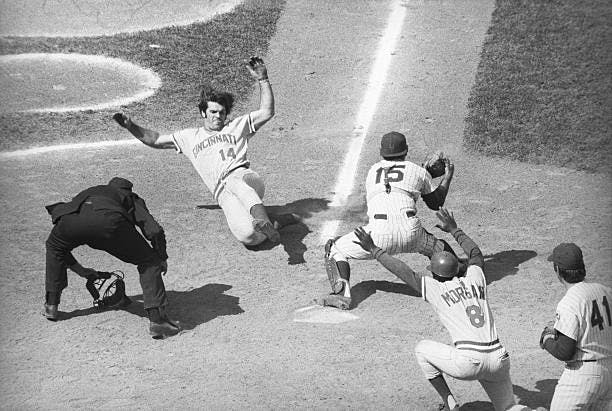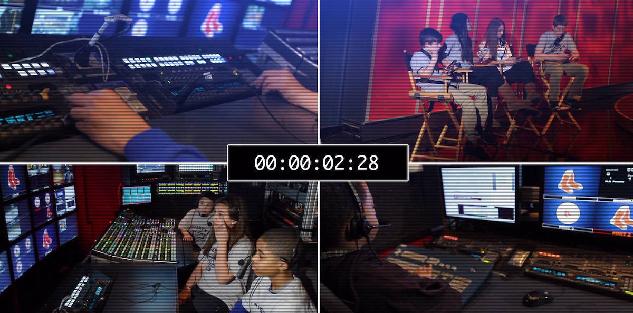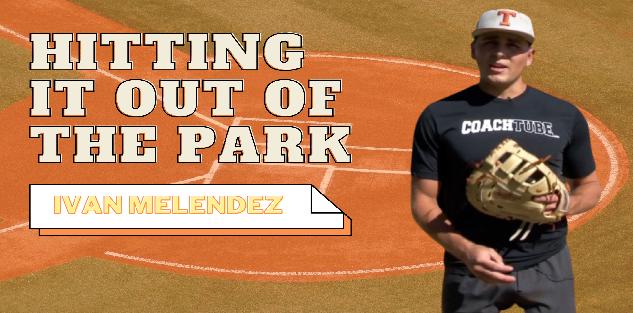Featured courses
- Understanding The Shift by Brandon Ogle
- Two Drills to Improve Outfield Movement and Communication by Grant Young
- The Ultimate Resource For Coaching Youth Baseball by Jackson Chlebowy
- Become a Master at Bunting by Brandon Ogle
- 5 Reasons Why There Is More To Good Base Running Than Just Speed by Brandon Ogle
- Three Injury-Prevention Tips For Your Offseason Pitching Program by Grant Young
- How to Teach Hitting to the Next Generation by Grant Young
- Developing Defensive-Minded Baseball Catchers by Grant Young
- 3 Baserunning Tips to Score More Runs in Baseball by Grant Young
- 5 Outfield Drills to Work on in Season by Alec Burris
- Keys For Scoring More With Runners on First and Third Base by Grant Young
- How to Develop Your Game to Become a Five-Tool Player by Brandon Ogle
- 3 Coaches Share the Keys to Running Baseball Practice the Right Way by Grant Young
- Four Drills to Sharpen a Baseball Hitter’s Vision at the Plate by Grant Young
- Four Quotes to Hit Better With Two-Strikes by Grant Young
- Four of Former MLB Pitcher Juan Nieves’ Movement-Based Pitching Drills by Grant Young
- Two Tips For Developing an Elite Baseball Bullpen by Grant Young
- Overcoming the Four Challenges of Indoor Baseball Practices Because of Weather by Grant Young
- Three Tips to Make Your Baseball Team Mentally Tougher by Grant Young
- Three Priceless Philosophies to Motivate Your Baseball Team by Grant Young
- Three Offseason Baseball Drills to Simulate Competition by Grant Young
- Three Baseball Offseason Strength and Conditioning Essentials by Grant Young
- Important Ways to Improve Your Baseball Team’s Baserunning by Grant Young
- Three Ways to Perfect Hitting Mechanics From an MLB Icon by Grant Young
- Catchers can influence pitchers...for bad or good by Drew Johnson
- Throwing Strikes and Playing Good Defense Equals Wins by Jose Ortiz
- Legendary Indiana Head Baseball Coach Bob Morgan’s Offensive Theory by Grant Young
- Tennessee Head Baseball Coach Tony Vitello on How to Practice Baserunning by Grant Young
- Three Great T-Ball Drills For Youth Baseball Players by Grant Young
- How to Manage a Baseball Pitching Staff by Grant Young
- Three Uncommon Tips to Become a Better Hitter by Grant Young
- How a Baseball Coach Can Develop Strike Throwers by Grant Young
- Drills to Develop Elite Baseball Outfielders by Grant Young
- Baseball Training Exercises to Strengthen Arm and Bat Speed by Grant Young
- How to Use Bunting to Score More Runs by Grant Young
- How To Build An Elite Baseball Infielder by Grant Young
- Three Drills to Improve Your Baseball Team's Infield Play by Grant Young
- Three Keys to Curating a Pitching Staff’s Success by Grant Young
- 3 Techniques to Develop a Baseball Player’s Hitting Approach by Grant Young
- How to Cultivate Confidence Within Your Pitchers by Grant Young
- 5 Every Day Drills To Help You Become A Better Catcher by tyler Linderman
- How to Throw A Curveball by Brandon Ogle
- How to Assemble a Lock-Down Bullpen by Brandon Ogle
- How to Throw a Sinker by Brandon Ogle
- How to be a Smart Baserunner by Brandon Ogle
- Improving a player's slugging average by Phillip Woolgar
- The 8 Fundamentals of Pitching by Drew Johnson
- How to Throw a Deceiving Changeup by Brandon Ogle
- Step Up Your Outfield Defense With These Three Drills by Jose Ortiz
- 8 Baseball Drills Every Player Should Practice by Drew Johnson
- How To Become An Elite Defensive Outfielder by Tyler Linderman
- 5 Tips For Crushing A Curveball by Johnny Grassi
- LEGENDS FOR YOUTH INCLUSION BASEBALL CLINIC by Phil
- Fourteen Ways To Turn A .300 Hitter Into A .210 Hitter by Jay P. Granat, Ph.D.
- How To Become The Ideal Leadoff Man by Brandon Ogle

How to be a Smart Baserunner
- By Brandon Ogle
Base running has always served a major role in every baseball game. Coaches are consistently intrigued to have players on their roster with the speed necessary to change games. Anyone who has followed last year’s playoff run from the Kansas City Royals remembers outfielder Jarrod Dyson using the line, “That’s what speed does!” However, players must realize there’s more to it than just stealing bags.
Yes, stolen bases are intriguing to many, but you can still be an effective base runner without a ton of stolen bases.
<Know the Value of Your Run Run
Be Mindful of the Situation. No matter what level you’re playing at, it is vital for players to be aware of what is going on in the game. This includes the inning, score and place in the batting order. The base running strategy will vary depending on these characteristics, no matter how fast you are on the base paths. It doesn’t make much sense for a player to attempt a stolen base when their team is down by 5 runs in the 7th inning. This is because that player’s run isn’t very valuable. Yes, it will be needed to complete the comeback, but a stolen base alone isn’t always worth the risk. Not only could it take a runner off the bases and cost the team an out, but it can be mentally draining for a team. Teammates may have some hope after the leadoff single, only to be let down due to a mental error.
Home to Firstirst
The thing coaches always want to see in this route is hustle from their players.
Obviously, you can get down the path quicker if you’re a faster player, but there is no reason for a player to be doggin it. Immediately after contact, you must drive your back foot and get out of the box with pace. Only after this is done should you look where the ball is going and decide whether extra bases will be a possibility. Even if it’s a routine grounder to short, you never know when an error will occur. As a side note, on grounders in the infield, run through first base even when it may seem sliding will be quicker
First to Second ond
Due to the distance between first and second, it often witnesses the most stolen bases because of the difficult throw it places on the catcher. However, knowing proper base stealing techniques is only part of the trick. Upon getting to first base, players need to get the signal from the third base coach and then prepare to lead off the base. A couple of useful tips include staying in an athletic position and keeping an eye on the pitcher the entire time. Don’t let the pitcher catch you day-dreaming and be a victim of an easy pickoff. Another critical concept is the secondary lead, also known as a shuffle. Try to take a second shuffle as the ball crosses the plate, thus allowing you momentum in case the ball is hit.
Stealing Second or Third ird
Racking up stolen bases is one way for fast players to get noticed. It is one reason guys like Billy Hamilton and Dee Gordon have gained so much attention on a national scale, as they clearly portray plus-speed. When stealing bases, the key thing to focus on is the pitcher. One area is the pitcher’s head to see if you notice tendencies for what he acts like when he intends to throw it home or to a base. Try to get a pitcher timed as the game goes on and disrupt any rhythm he or she may have. At the same time, base runners must be aware of the differences between righties and lefties. In particular, it’s going to be tougher to steal second against lefties. The best method for combatting this advantage is to take note of the leg kick. The higher the leg kick, the greater the odds that the pitcher will go home with the ball. Picking up on all of these tendencies will allow a player to be a more effective base stealer. However, don’t forget about the fundamentals for getting back to the bag, such as staying low and extending your arms.
First to Thirdhird
Making the move from first base to third requires a player to determine whether the hit will get past the infield and the chances of a successful move to third. Being able to make a quick evaluation of the surrounding characteristics will allow this transition to be much more effective. Balls hit to left field will be easier to see firsthand, but also likely more difficult to run on. Conversely, when the ball flairs to right field, keep an eye on the third base coach to tell you whether or not to take third. The odds are higher on those hits to right field due to the distance the throw would have to cover, but it all depends on the talent of the outfielders.
Tagging Upg Up
The art of tagging up can occur on any base. Whether it is advancing into scoring position from first, moving from second to third, or tagging up for a sacrifice fly, it mostly depends on the situation. I’ll start off with tagging from third. Any ball that hit into the air should force you to retreat to the bag. Upon determining the distance, decide whether you can make it home as the ball is in the air. Next, when the runner is on second, the topic of situation arises again. If your team already has one out, it doesn’t make much sense to tag unless the ball is hit to the warning track. This is because the reward doesn’t outweigh the risk. Finally, with a runner on first, the rule of thumb is to usually not tag up. The throw to second is the shortest of any outfield throw, which decreases the attractiveness of such opportunity. QC Baseball does provide an example of one situation where this tag up makes sense, which is where runners are on first and third. “In this case having both players break on the catch and reading the throw can provide an opportunity for at least one of them to advance.” In the end, it’s important to keep an eye on the base coach and the ball to make a final call.
Scoring on a Wild Pitch/Passed BallBall
For younger players, the move from third to home on a wild pitch or passed ball is much more effective than it is for older players. The focal point here is communication between the runner and third base coach. When the player arrives at third base, the coach should inform him or her on how aggressive they intend to be on anything that gets past the catcher. Some characteristics to keep in mind in making this decision is the bounce off the backstop and ability of the catcher. At the same time, you have to be wary of the situation and the value of your individual run. However, perfecting this action comes from plenty of practice to understand which balls you can score on and which ones you should stay steady.
Practice!ice!
Many of the aspects of successful base running comes from game experience. The more you’re on the base paths, the better you’ll get at running the bases. Likewise, even if you’re not the fastest athlete, that doesn’t mean you can’t be a great base runner. By understanding the fundamentals presented in this article, you will avoid mental mistakes and make logical decisions between the bases.



